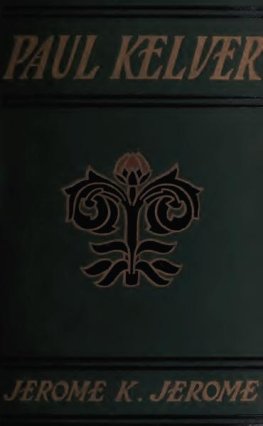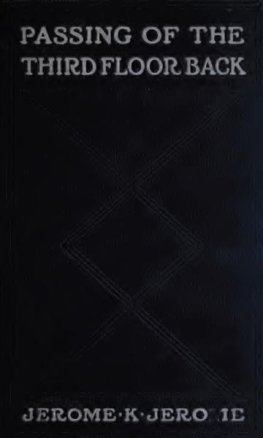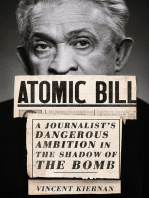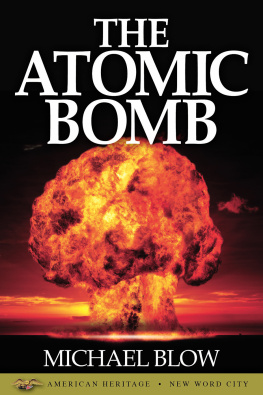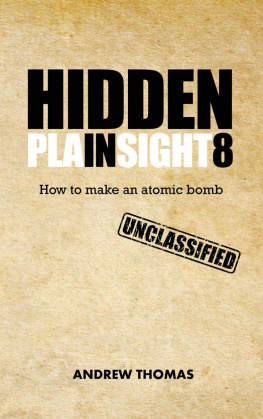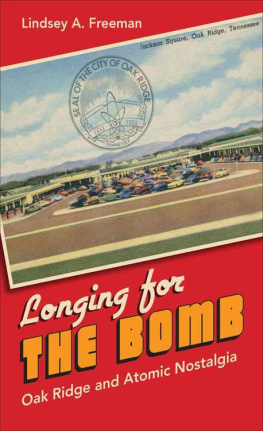Shapiro Jerome F. - Atomic Bomb Cinema
Here you can read online Shapiro Jerome F. - Atomic Bomb Cinema full text of the book (entire story) in english for free. Download pdf and epub, get meaning, cover and reviews about this ebook. publisher: Taylor & Francis Group, genre: Romance novel. Description of the work, (preface) as well as reviews are available. Best literature library LitArk.com created for fans of good reading and offers a wide selection of genres:
Romance novel
Science fiction
Adventure
Detective
Science
History
Home and family
Prose
Art
Politics
Computer
Non-fiction
Religion
Business
Children
Humor
Choose a favorite category and find really read worthwhile books. Enjoy immersion in the world of imagination, feel the emotions of the characters or learn something new for yourself, make an fascinating discovery.
- Book:Atomic Bomb Cinema
- Author:
- Publisher:Taylor & Francis Group
- Genre:
- Rating:5 / 5
- Favourites:Add to favourites
- Your mark:
- 100
- 1
- 2
- 3
- 4
- 5
Atomic Bomb Cinema: summary, description and annotation
We offer to read an annotation, description, summary or preface (depends on what the author of the book "Atomic Bomb Cinema" wrote himself). If you haven't found the necessary information about the book — write in the comments, we will try to find it.
Atomic Bomb Cinema — read online for free the complete book (whole text) full work
Below is the text of the book, divided by pages. System saving the place of the last page read, allows you to conveniently read the book "Atomic Bomb Cinema" online for free, without having to search again every time where you left off. Put a bookmark, and you can go to the page where you finished reading at any time.
Font size:
Interval:
Bookmark:

The apocalyptic imagination on film
JEROME F. SHAPIRO

Published in 2002 by
Routledge
29 West 35th Street
New York, NY 10001
Published in Great Britain by
Routledge
11 New Fetter Lane
London EC4P 4EE
This edition published 2011 by Routledge
Routledge
Taylor & Francis Group
711 Third Avenue
New York, NY 10017
Routledge
Taylor & Francis Group
2 Park Square, Milton Park
Abingdon, Oxon OX14 4RN
Routledge is an imprint of the Taylor & Francis Group.
Copyright 2002 by Jerome F. Shapiro.
All rights reserved. No part of this book may be reprinted or reproduced or utilized in any form or by any electronic, mechanical, or other means, now known or hereafter invented, including photocopying and recording or in any information storage or retrieval system, without permission in writing from the publishers.
Cataloging-in-Publication Data is available from the Library of Congress.
ISBN 0-415-93659-4ISBN 0-415-93660-8 (Pbk.)
To my beloved uchi no karnisan , Tomoko Tonia Yabe, and our two wonderful children, Dixon Takashi and Sydney Kozue. Daily they restore my fractured world with love and laughter.
In my first year of college, I asked an art professor how long it took him to make a photograph. With the polished sarcasm of a Zen master he scoffed, All my life. With that in mind, I would simply like to thank the world for my existence, and also thank everyone I have ever known. But that does not seem appropriate. So, let me begin by acknowledging that same art professor for so immeasurably enriching my life and without whom this book may never have been written. H. Arthur Taussig, my cherished friend, thank you. And, thanks to the members of my doctoral committee, who, way back when, believed in me when it seemed like few others did: Dickran Tashjian, Anne Friedberg, Joseph L. White, Masayasu Normura, and especially Peter Clecak, who encouraged me to pursue my scholarship as a creative, spiritual activity.
A few individuals deserve special recognition: Joanne Trautmann Banks, Allan Casebier, Hayao Kawai, Toshio Kawai, J. Brooks Maue, Rabbi Mel Silverman, Gerald Vizenor, Seth Ward, and especially Tomoko Yabe and Shin-ichi Anzai, for inspiring and helping me to complete this book; Takashi Akinami, for his lectures on Japanese theater and a gesture of friendship that I was too young to appreciate; Harue Yokoyama and Masaki Haramoto, for teaching me ikebana and so much more; Thomas Dabbs, for his extraordinary generosity and brilliance in showing me that I could both shorten and improve my manuscript; William Germano, my editor, of course, along with Matt Byrnie, Lisa Vecchione, Lai Moy, and everyone at Routledge deserve more thanks than I could possibly offer; and Mr. Mumma, of Castro Valley, California, for teaching me to read when no one else could.
Some of the scholars that I strongly challenge in this book have encouraged me in my research, and some are even my friends. James Berger, Mick Broderick, David Desser, Linda C. Ehrlich, Robert J. Lifton, Donald Richie, and most especially Paul Boyer, I thank you.
Many others deserve my thanks, including: Takao Aoki, Sakura Asoda, Bonnie Lee Berger, Brad and Nenelle Bunnin, Donna Chaban, Steve Cohen, Randy Davis, A. J. Dickinson, Peter Dusenbery, Yasuhiro Enno, Raoul Fernandez, Aaron Gerow, Mike Gonzales, Michael Gorman, Bernard Greenberg, Kimi Honda, Tarow Indow, Helen Irlen, Kenji Iwamoto, Joseph G. Jorgensen, Eriko Kamata, Setsuo and Chizuko Kamimura, June Kurata, Judith Kimura, Jayne Loader, Kit Machado, Leo Maloy III, Lorne Marin, Howard and Amy Mass, Edna Mejia, Masaki Nishimura, Reiko Nitta, Masako Notoji, Patricia Jean Olynyk, Al Painter, Richard B. Parker, Susan Pavloska, Frank Pollick, Anne Saddington, Yasuo Sakakibara, Masaki Sat, Chris Schreiner, MaSatoyo and Yumiko Sawada and family, Takao Shhji, Robert Sklar, Pam Steinle, Andrea Streit, Masanori Suiko, Takahiro Sumiya, Jane M. Sweeney, Brian Teaman, Blake Thatcher, Akira Tochigi, Kazuo Totani, John and Tomoko Traphagan, Michael Treanor, Tadashi Wakashima, Brad Warner, Holger Westmyer, Dale Write, Betty May Yang, Satoru Yoshimoto, and my many teachers and students in Japan and the United States.
I wish to also acknowledge the support of Orange Coast College, especially the Fine Arts Division and the English Department; California State University, Long Beach, Philosophy and Comparative Literature Departments, and California State University International Programs; Waseda University, International Division, and my friends in the Kendo and Rainbow clubs; University of California, Irvine, Program in Comparative Culture, Film Studies, and the School of Social Sciences; Kyoto University, Faculty of Integrated Human Studies and Faculty of Letters; my many colleagues in the Faculty of Integrated Arts and Sciences, Hiroshima University, and especially our departmental secretaries, Tomoko Takeda and Kazumi Okano; the Japanese Association for American Studies; the American Studies Association; the Society for Cinema Studies; the Japan American Literature Society; the Hiroshima Society for the Science of Arts; the Japan Society of Image Arts and Sciences; Kyoko Hirano and the Japan Society; Richard Landis and the Center for Millennial Studies; and particularly Leonard Greenspoon and Creighton Universitys Klutznick Symposium.
Last, but not least: Harry and Sue, my parents, and Steven and Beth, my siblings; my many relations branching out from the Shapiro, Chaban, Yabe, Nishijima, Jitsukata, and Kuriyama families; and my host family in Japan, the Asodas. Most importantly, my wife, Tomoko, and our children, Dixon Takashi and Sydney Kozuethey have contributed so much to my writing this book.
I thank you, one and all.
Vexing questions, and atomic bomb cinema
It is a strange but psychologically most interesting fact that almost every critical period in history considers itself as the worst that has ever existed and as the one that precedes the final doom of mankind.
Our time is truly disruptive.
Gerhard Adler, Psychology and the Atom Bomb
As I sit before my computer putting the final touches on this study, writing the introduction, I can just barely see my reflection in the monitor. I imagine myself to be an actor in the N theater of Japan. Before going on stage the actor sits before a mirror, with mask in hand, and meditates. This creates a state of ma or emptiness within him, thus allowing the spirit of the character he plays to fill the vacuum created by the ma . Through the actor the tormented spirit can tell his story, achieve catharsis, then return to the other world and rest. But the actor, who has his own story, is not just a vehicle for the spirit.
My story begins in the late winter of 1984 when I fled West from an unusually cold Tokyo to thaw out. As with all good journeys, the most important moments occurred during the return trip. On my way home I stopped in Nagasaki, and then Hiroshima. In Hiroshima I was dumb-struck by the dark silhouette of a body on stone steps, the surrounding surface having been bleached by the light of an atomic bomb. I have been unable to excise this image from my memory. It sits on my mind like a third eye looking inward. After returning to California I began, without any conscious plan or goal, to collect images of the bomb, primarily films. As frequently happens when one is too close to a subject, it took a friend to suggest that I use the films and ideas I had already collected and write a book on the image of the bomb in films, or what I now call atomic bomb cinema.
Font size:
Interval:
Bookmark:
Similar books «Atomic Bomb Cinema»
Look at similar books to Atomic Bomb Cinema. We have selected literature similar in name and meaning in the hope of providing readers with more options to find new, interesting, not yet read works.
Discussion, reviews of the book Atomic Bomb Cinema and just readers' own opinions. Leave your comments, write what you think about the work, its meaning or the main characters. Specify what exactly you liked and what you didn't like, and why you think so.


